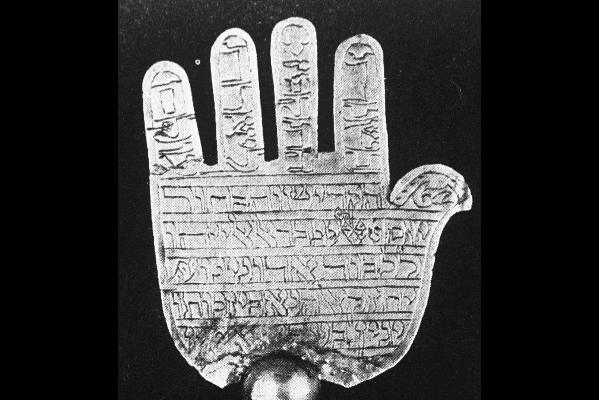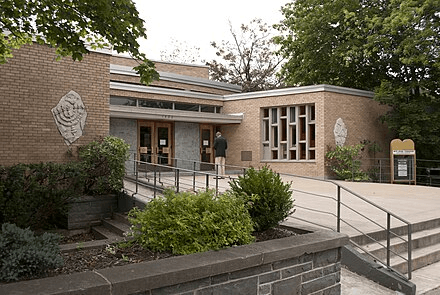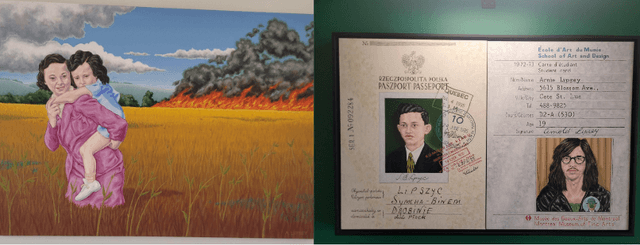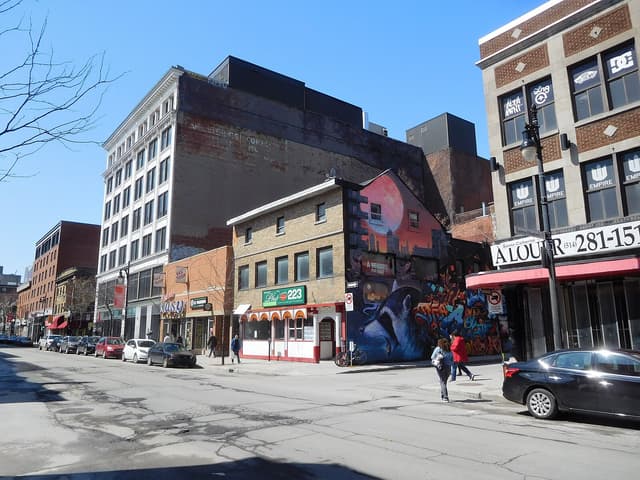On Thursday, March 29, hundreds of Jews gathered in Montreal’s historic Spanish & Portuguese Synagogue to celebrate the vibrant yet often overlooked cultural traditions of Iraqi Jewry. The event was sponsored by the Jewish Public Library (JPL) and headlined by a brilliant lecture on Jewish-Iraqi music by one of the world’s foremost Jewish musicologists, Dr. Edwin Seroussi.
Iraqi Jews make up the largest ethnic contingent of the Spanish & Portuguese Synagogue’s congregation. Many of them were present at the event, mingling amongst themselves speaking French, English, Hebrew, and Arabic. Surprised by the impressive turnout, I approached the congregation’s longtime chazan, Daniel Benlolo, who quipped that he’d be dumbfounded to find this many people at the synagogue on Shabbat morning. Qualifying his joke, Benlolo explained that it is not so much religious Jewish practice that brings this community together but rather its cultural traditions. In the same vein, Yael Goutard, Director of Programming at the Jewish Public Library and lead organizer of the event, named two key factors responsible for the successful turnout: food and music.
As the crowd settled into their seats, each guest was invited to indulge in an “Iraqi lunchbox” of traditional delicacies prepared by the Sisterhood of the Spanish & Portuguese Synagogue. Iraqi guests at my table eagerly offered me a culinary tour of my box, sharing with me the Arabic names for each dish. I was introduced to sambousek, a samosa-like pastry with a vegetarian chickpea filling; ba’aba, a tamarind flavoured cracker; and, the star of the show, beith-al-t’beet, an egg-based ‘cholent’ slow-cooked overnight and stuffed into a fluffy pita with succulent eggplant, referred to by Iraqi Jews in Arabic as banjan.
Once the audience had been sufficiently nourished, Dr. Seroussi took the podium to deliver a lecture entitled “By the Rivers of Babylon: Music and Memory Among Iraqi Jews.” Seroussi, a Uruguayan-born Israeli musicologist, 2018 Israel Prize laureate, and Director of the Jewish Music Research Centre at Hebrew University of Jerusalem, opened his presentation with an Israeli recording from the 1950s of an Iraqi chazan chanting Psalm 137:1-4, better known in its English translation as the popular song “By the Rivers of Babylon.” Seroussi emphasized that the dirge shares the same mournful melody as Megillat Aicha on Tisha Ba’av, reflecting the “sadness and also [the] sense of hope” felt by the Iraqi-Jewish community after being forced to flee their diasporic homeland in Iraq. Like their ancestors exiled to Babylon after the leveling of the Beit Hamikdash, Iraqi Jews had a “dream of reconstruction after destruction” in the newly founded State of Israel. Seroussi then pivoted to discuss songs of pilgrimage sung by Iraqi Jews for millenia during the community’s semi-annual Ziyara—a sacred pilgrimage to the tomb of the prophet Yechazkel outside Baghdad during the holidays of Pesach and Lag Ba’omer. Today, this pilgrimage no longer takes place. However, many of the songs, including Yom Geelah and Bar Yochai, live on today in the larger canon of celebratory Jewish music, especially surrounding the holiday of Lag Ba’omer.
To close his lecture, Seroussi played recordings of 20th century Iraqi-Jewish pop music, including the crowd favourite “Fog El Nahal,” composed by the Jewish Al-Kuwaiti brothers in the 1940s. From the first note, Iraqi audience members joined together in song. Daughters pulled their elderly fathers out of their seats to dance, older Iraqi women in colourful scarves ululated from their seats, and everyone else clapped along. Refusing to smother the passion and pride that had erupted among his Iraqi audience, Seroussi wisely cut his lecture short here.
One attendee, an Iraqi man named Marwan, sorrowfully stated that the mainstream Jewish world has “forgotten about us [Iraqi Jews].” Goutard explained that this sentiment was a key reason why the Jewish Public Library decided to put on this particular event. For years, Goutard explained, the JPL has been problematically Ashki-centric. As such, the organization is now “undergoing a major renaissance” to focus on highlighting non-Ashkenazi cultures and traditions. To this, I say L’chaim! I hope that through more events like this one, our community will continue to learn about and appreciate the diverse cultural traditions that make up the vibrant tapestry that is the Jewish People.
Powered by Froala Editor





